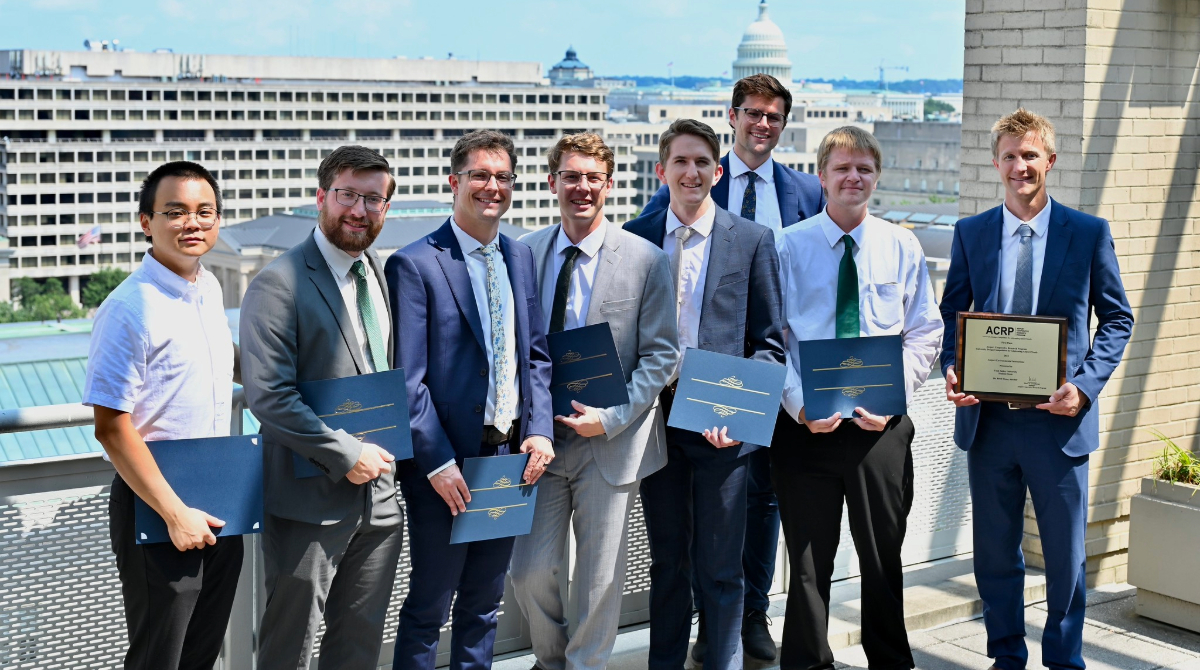A team of ten mechanical engineering and three computer science students from Utah Valley University (UVU) emerged victorious at the Airport Cooperative Research Program (ACRP) University Design Competition for Addressing Airport Needs on July 31, 2024.

WASHINGTON, D.C. — A team of ten mechanical engineering and three computer science students from Utah Valley University (UVU) emerged victorious at the Airport Cooperative Research Program (ACRP) University Design Competition for Addressing Airport Needs on July 31, 2024. Their innovative “Autonomous Electric Aircraft Tug” submission secured first place in the Airport Environmental Interactions design challenge category.
The UVU team members were awarded $3,000 for their win through the ACRP program. When completely developed, the tug will have the capability to remotely steer any size of aircraft on the tarmac. It promises to revolutionize aircraft movement, enhancing safety, saving fuel, and reducing emissions.
A team from the College of Aeronautics and Engineering at Kent State University placed second, and a team from the Civil Engineering Department at the Virginia Military Institute placed third in the Airport Environmental Interactions design challenge category.
The winning universities were selected by a distinguished panel of industry, Federal Aviation Administration (FAA), and academic experts. The ceremony was attended by senior FAA and Transportation Research Board officials, who witnessed each team’s presentation on their submissions, followed by a short Q&A session.
“This recognition highlights the exceptional talent and dedication of the students who worked tirelessly on the project,” said UVU Professor Brett Stone, who holds a doctorate in mechanical engineering and is a former design engineer at Northrop Grumman. “They balanced this project with their other academic commitments, full- and part-time jobs, and family responsibilities. I am so very proud of their accomplishment.”
The students first showcased the tug prototype on a Diamond DA40 XLT for the first time at the Provo Airport on April 12. By utilizing this technology, airports could save millions of dollars in fuel costs. For instance, it is estimated that Salt Lake International Airport could have saved approximately $2.5 million in 2019 if tugs had been employed while also reducing emissions, equivalent to removing over 2,400 cars from the road for a year.
The development of the tug was made possible, in part, by a generous $10,000 grant from the Rocky Mountain Power Foundation, which is committed to investing in STEM education. This support enabled the UVU students to embark on their journey of discovery, designing, assembling, and testing the tug. The project has transcended the classroom, providing invaluable hands-on experience, which is part of UVU’s foundational learning model.
Looking ahead — Doctors Stone and Matt Jensen, associate professor of mechanical engineering — the masterminds behind this project, are focused on the next phase: building a full-size, functioning tug capable of hauling a 737-sized aircraft. They have already sought patents for their innovative design and are optimistic about the potential commercial availability of their tug in the near future.